Revmoksikam® 15 mg (10 tablets)
$13.10
Description
The instruction for medical use
of REVMOKSIKAM® medicine
the Trade name
of Revmoksikam®
the International unlicensed
name Meloksikam Lekarstvennaya a form
of the Tablet of 7.5 mg and 15 mg
Structure
One tablet contains
active agent – to meloksika of 7.5 mg or 15 mg
excipients: lactoses monohydrate, cellulose microcrystalline, sodium citrate, povidone, krospovidon, silicon dioxide colloidal anhydrous (aerosil), magnesium stearate
the Description
of the Tablet of yellow color, with a flat surface, a facet and risky.
On a surface of a tablet the marbling is allowed (for a dosage of 7.5 and 15 mg).
Pharmacotherapeutic group
Non-steroidal anti-inflammatory drugs. Oksikama.
Meloksikam.
The ATX M01AC06 code
the Pharmacological
Meloksikam Pharmacokinetics properties after intake is well absorbed from a digestive tract. The bioavailability is 89%. Stable concentration is reached on 3 – the 5th day. Consumption of food does not influence absorption of a meloksikam. In plasma of 99% of a meloksikam is in the look connected with proteins. Concentration of a meloksikam in synovial fluid makes 50% of concentration in blood plasma. Meloksikam is almost completely metabolized to inactive metabolites in a liver. Elimination half-life of a meloksikam makes 20 h. The plasma clearance averages 8 ml/min. Meloksikam is brought by kidneys and through intestines approximately in equal proportions. A liver and renal failure easy and moderate severity significantly do not influence pharmacokinetic parameters of a meloksikam.
The pharmacodynamics
Drug belongs to non-steroidal anti-inflammatory drugs of a class of oksikam, is selection TsOG-2 inhibitor. Has anti-inflammatory, analgeziruyushchy and febrifugal effect. The mechanism of action is connected with inhibition of synthesis of prostaglandins (known mediators of inflammation) owing to oppression of enzymatic activity of TsOG-2 in the inflammation center, slightly influences TsOG-1 that reduces risk of development of side effect.
Indications
Symptomatic treatment:
– a pain syndrome in osteoarthrites, arthroses, degenerative articulate diseases
– pseudorheumatisms
– ankylosing spondylites
the Route of administration and doses
the Adult.
Osteoarthrites: the daily dose makes 7.5 mg, in need of it increase up to 15 mg/days.
Pseudorheumatisms: drug is appointed on 15 mg/days, at achievement of positive therapeutic effect the dose can be reduced to 7.5 mg/days.
Ankylosing spondylites: drug is appointed on 15 mg/days, at achievement of positive therapeutic effect the dose can be reduced to 7.5 mg/days.
At patients with the increased risk of side reactions the initial medical dose makes 7.5 mg/days.
At the patients with a heavy renal failure who are on a hemodialysis, the dose should not exceed 7.5 mg/days.
It is necessary to apply the smallest effective daily dose and the smallest duration of treatment as with increase in a dose and
duration of treatment the risk of development of side reactions increases.
The maximum recommended daily dose for children over 12 years makes 0.25 mg/kg of body weight.
The maximum recommended daily dose of Ревмоксикама® 15 mg.
The combined use: the general daily dose of Revmoksikama® at its use in the form of tablets and suppositories should not exceed 15 mg.
Considering that the dose for children is younger than 12 years it is not established, it is necessary
to be limited to drug use only for children 12 years and adults are more senior.
The pill should be taken at meal time, not to chew, wash down with water or other liquid.
Duration of a course of treatment is established individually depending on a course of the disease and efficiency of the carried-out therapy.
Side effects
– emergence of attacks of asthma in persons with hypersensitivity to acetylsalicylic acid or on other NPVS
– dyspepsia, nausea, vomiting, a meteorism, diarrhea, a constipation, intestinal colic, an esophagitis, stomatitis, the latent or macroscopically visible gastrointestinal bleedings seldom – erosive cankers of a digestive tract, passing abnormal liver functions (increase in activity of hepatic transaminases or bilirubin), perforation of a GIT, colitis, gastritises, hepatitis
– a headache, dizziness, sonitus, drowsiness, lability of mood, irritability, a disorientation, confusion of consciousness
– dysfunction of sight (illegibility of sight), conjunctivitis
– hypostases, increase in arterial blood pressure, heart consciousness, inflows
– change of indicators of function of kidneys (increase in creatinine and/or urea of blood serum, a hamaturia, an albuminuria, an acute renal failure, urination disorders, including a sharp ischuria
– anemia, a leukopenia, thrombocytopenia, changes of a leukocytic formula Co-administration of potentially myelotoxic drug, especially a methotrexate, can lead ment of a pancytopenia
– an itching, skin rash, a small tortoiseshell, a photosensitization
development of a syndrome of Stephens-Johnson, a toxic epidermal necrolysis, bullous reactions, a multiformny erythema
– a Quincke’s disease, anaphylactic and/or anaphylactoid reactions
–
the Contraindication ovulation delay
– hypersensitivity to a meloksikam and other non-steroidal anti-inflammatory drugs Is in rare instances possible, including acetylsalicylic acid
– existence of the symptoms (connected with use of acetylsalicylic acid or other non-steroidal anti-inflammatory drugs (NPVS)): bronchial asthma, nasal polyps, a Quincke’s disease or
– small tortoiseshells in the anamnesis as reactions of cross hypersensitivity
– an ulcer of digestive tract/perforation (active form or their recent emergence)
– an active form of inflammatory diseases of a large intestine (Crohn’s disease or ulcer colitis)
– a heavy liver failure
– the renal failure which is not subject to a hemodialysis
– any disorders with bleedings are possible, manifest gastrointestinal bleeding, recent cerebrovascular bleeding
– heavy uncontrollable heart failure
– children’s age up to 12 years
– pregnancy and the period of a lactation
– treatment for elimination of postoperative pain at aortocoronary shunting
– congenital disturbances at which inactive components of drug can be harmful (see the section Special Instructions).
Medicinal interaction
of Revmoksikam® together with other NPVS can increase risk of developing of ulcers of a mucous membrane of a GIT and gastrointestinal bleedings owing to their synergism. Joint purpose of Revmoksikama® and other NPVS is not recommended.
Together with anticoagulants, antiagregant, thrombolytic means, heparin and Revmoksikam® selective serotonin reuptake inhibitors increases risk of developing bleedings because of slowing down of function of thrombocytes. If it is impossible to avoid their simultaneous use, it is necessary to control a condition of the patient.
Ревмоксикам® can reduce renal excretion of lithium that leads to increase in its concentration in blood plasma to toxic level.
At simultaneous use with a methotrexate the negative impact on the haematogenic system (risk of developing anemia and a leukopenia) increases therefore periodic control of indicators of blood is necessary.
There are data that drug can reduce efficiency of intrauterine contraceptives, but this statement demands a further research and confirmation.
At simultaneous use with Revmoksikamom® of a holestiramin the removal of a meloksikam accelerates.
Ревмоксикам® can reduce efficiency of antihypertensive drugs
(b-blockers, APF inhibitors) that is connected with the inhibiting impact on vazodilatatorny prostaglandins.
Together with diuretics there can be a risk of developing an acute renal failure therefore it is necessary to control function of kidneys and to support the adequate level of hydration.
NPVS and antagonists angiotensin of the II turning receptor and also ACE inhibitors render synergy effect on reduction of glomerular filtration. At patients with the existing disturbance of renal function it can lead to an acute renal failure.
NPVS influencing renal prostaglandins increase nephrotoxicity of cyclosporine that demands the strengthened control of function of kidneys at simultaneous use of drugs.
Meloksikam almost completely collapses by hepatic metabolism which about two thirds pass with the participation of P450 cytochrome (CYP) and one third – by peroksidazny oxidation.
Perhaps pharmacokinetic interaction of Revmoksikama® and other drugs at a metabolism stage due to their influence on the RMS 2C9 and/or the RMS 3A4.
At a concomitant use of Revmoksikama® with antacids, Cimetidinum, digoxin and furosemide of interaction at the pharmacokinetic level it is not revealed.
It is impossible to exclude interactions of drug with oral anti-diabetic means.
Special instructions
need to be watched attentively a condition of patients at drug use (as well as other NPVS) at patients:
– with gastrointestinal diseases and in case of simultaneous use of anticoagulants. It is forbidden to appoint to Revmoksikam®, patients with a round ulcer or gastrointestinal bleeding. At any time in the course of treatment at existence or without the previous symptoms, serious gastrointestinal diseases in the anamnesis, potentially fatal gastrointestinal bleedings, an ulcer or perforation can develop the Most serious consequences observed at people of advanced age,
– with cardiovascular diseases or with risk factors of developing such diseases. Non-steroidal anti-inflammatory drugs can increase risk of emergence of the serious cardiovascular trombotichesky phenomena, a myocardial infarction and stroke which can be fatal. At increase in duration of treatment this risk can increase.
NPVS can strengthen a delay of sodium, potassium and water and to affect natriuretic effects of diuretics. As a result, at predisposed patients the heart failure or arterial hypertension can arise or amplify. Carrying out clinical monitoring is recommended to such patients.
– with a reduced renal blood-groove as use of NPVS (NPVS inhibit synthesis of renal prostaglandin that plays an important role in maintenance of a renal blood-groove) can cause the renal failure passing at the termination of anti-inflammatory therapy by nonsteroid means.
The greatest risk of such reaction takes place at patients of advanced age, with dehydration, with chronic heart failure, cirrhosis, a nephrotic syndrome, chronic diseases of kidneys which receive the accompanying therapy with diuretic drugs, APF-inhibitors or antagonists angiotensin II the turning receptors, or after extensive surgical interventions which led to a hypovolemia. Such patients need control of a diuresis and function of kidneys at the beginning of therapy. In isolated cases of NPVS can lead to interstitial nephrite, a glomerulonephritis, renal medullary necrosis or ment of nephrotic syndromes.
At treatment of NPVS, separate cases of increase in level of transaminases or other indicators of function of a liver which in the majority were insignificant and temporary are described. At a resistant and essential aberration the treatment of Revmoksikamom® should be stopped and carried out control tests. At clinically stable patients with cirrhosis it is not necessary to reduce doses of Revmoksikama®.
The weakened patients need more careful observation as side effects at them have more difficult character. As well as at treatment by other NPVS, it is necessary to appoint with care them the patient of advanced age at whom depression of function of kidneys, a liver and heart is more probable.
Meloksikam, as well as any other NPVS, can mask symptoms of the basic infectious disease.
Use of a meloksikam, as well as other medicines inhibiting synthesis of cyclooxygenases / prostaglandins can influence fertilization and therefore it is not recommended for use for women who try to become pregnant. It is necessary to refuse reception of a meloksikam to women at whom fertilization is complicated or which undergo inspection concerning infertility.
Seldom or never at use of non-steroidal anti-inflammatory drugs, serious skin reactions (some of them were fatal) including exfoliative dermatitis, Stephens-Johnson’s syndrome and a toxic epidermal necrolysis were observed. The high risk of emergence of such reactions is observed in an initiation of treatment, at the same time in most cases such reactions appeared within the first month of treatment. At the first appearance of skin rashes, damages of mucous membranes or other signs of hypersensitivity it is necessary to stop use of Revmoksikama®. Because of possible emergence of side effects with localization on skin and mucous membranes it is necessary to pay special attention to emergence of the corresponding symptoms. At emergence of side effects the treatment of Revmoksikamom® should be stopped.
The structure of the tablets Revmoksikama® (on 7.5 mg and 15 mg) includes lactose, and at introduction of the maximum recommended dose to an organism 92.34 mg of lactose at a dose of Ревмоксикама® 7.5 mg and 122.70 mg of lactose at a dose of Ревмоксикама® 15 mg get. Therefore this drug is not recommended to be taken to patients with congenital intolerance of a galactose, with deficiency of lactase or disturbance of absorption of glucose or a galactose.
Use in pediatrics
Considering that the dose for children is not established, it is necessary to be limited to drug use only for children 12 years and adults are more senior. The maximum recommended daily dose for children over 12 years makes 0.25 mg/kg of body weight.
Pregnancy and the period of a lactation
In spite of the fact that the teratogenic effect during performing preclinical trials is not revealed, meloksika should not apply during pregnancy and during breastfeeding.
Features of influence of medicine on ability to run the vehicle or potentially dangerous mechanisms
Considering side effects of drug such as disorders of vision, including emergence of a veil before eyes, dizziness, drowsiness and other disturbances from central nervous system, it is necessary to be careful at control of transport or other potentially dangerous mechanisms.
Overdose
At overdose strengthening of the described side effects is possible. Treatment. It is necessary to wash out a stomach, to carry out symptomatic therapy. There are no specific antidotes and antagonists.
Form of release and packing
of the Tablet of 7.5 mg and 15 mg.
On 10 tablets place in blister strip packaging from a film of the polyvinylchloride light-protective white pigmented and printing aluminum foil varnished.
On 1 or 2 planimetric pack together with the instruction for medical use in the state and Russian languages place in a pack from cardboard.
To Store storage conditions in original packing at a temperature not over 25 ºС
to Store out of children’s reach.
A period of storage
3 years
not to use drug after the termination of the expiration date specified on packing.
Prescription status
According to the prescription
PJSC Pharmak Producer, Ukraine, 04080, Kiev, st. of Frunze, 63.
The owner of the registration certificate
of PJSC Pharmak, Ukraine
the Address of the organization accepting in the territory of the Republic of Kazakhstan claims from consumers on quality of products (goods)
the Republic of Kazakhstan, Almaty, index 050012, Amangelda St., 59 ‘A’
Business center ‘Shartas’, the 9th floor.
Ph.: +7 (727) 267 64 63, fax: +7 (727) 267 63 73, e-mail address: a.liadobruk@gmail.
com
Additional information
| Ingredient |
|---|





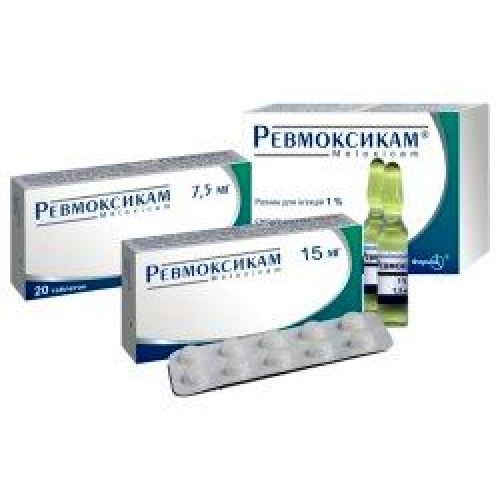
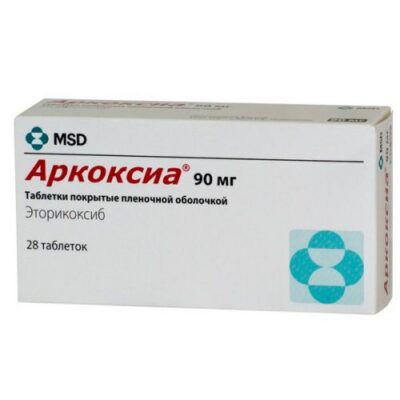
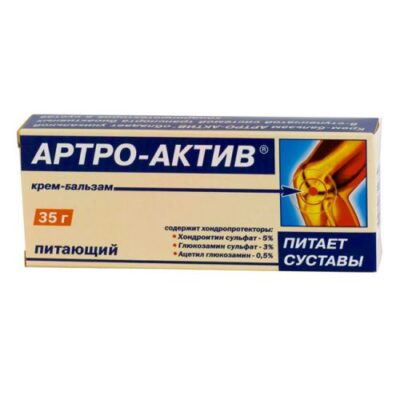
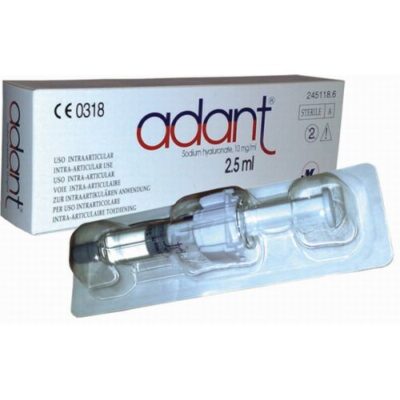
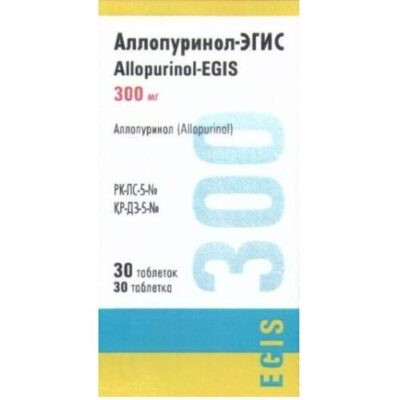
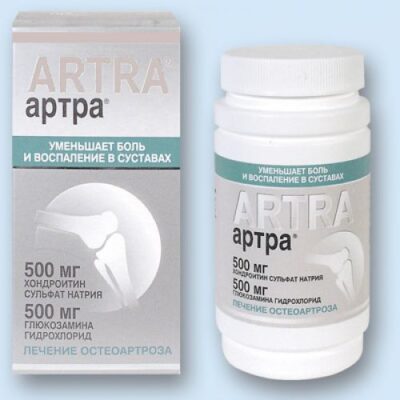
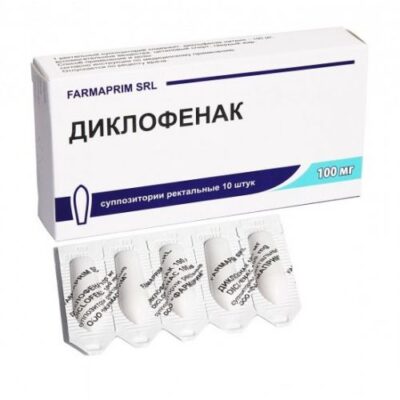
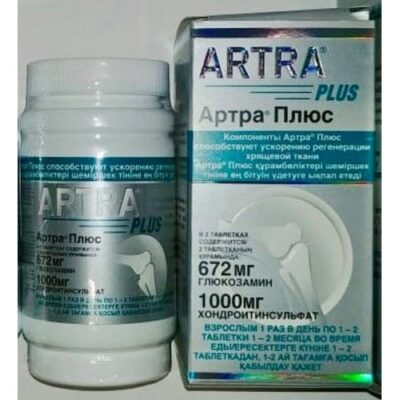
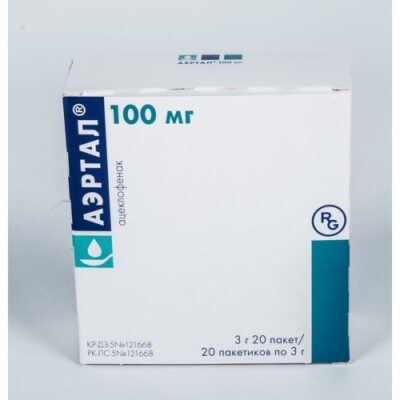
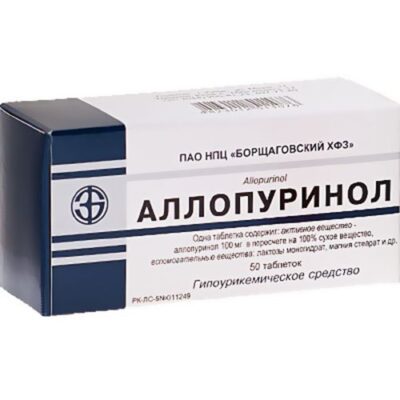
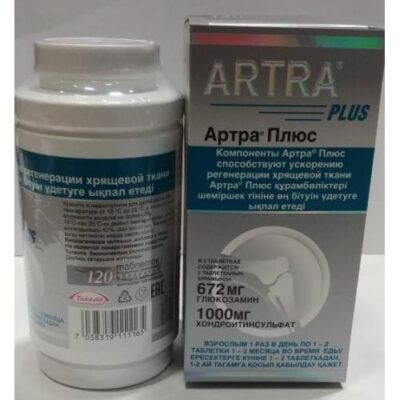






Reviews
There are no reviews yet.